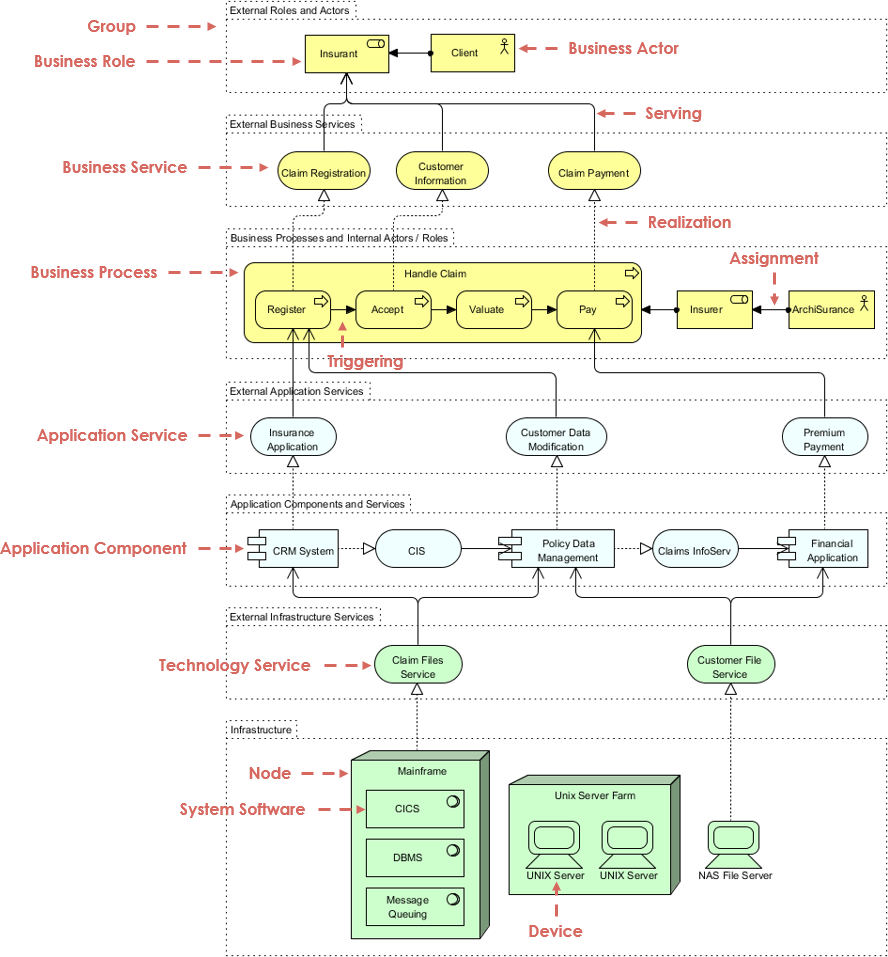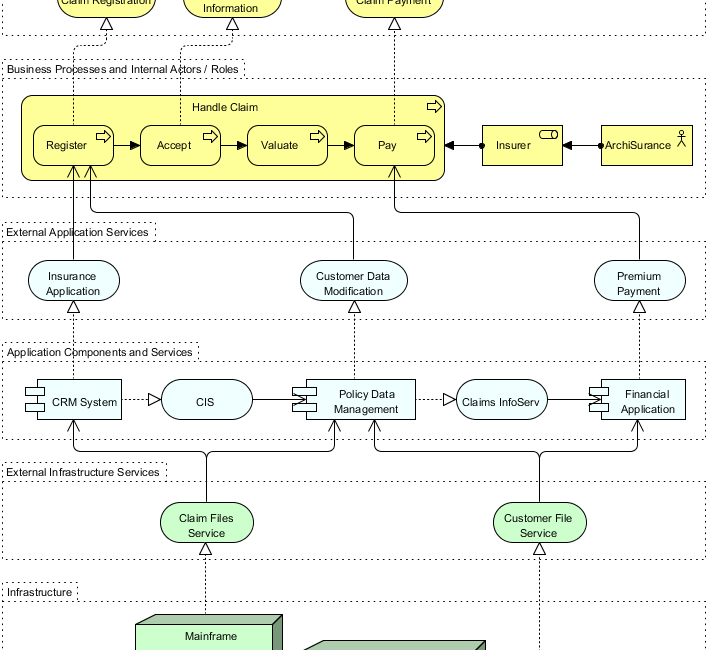
This pictures several layers and aspects of an enterprise architecture in one diagram. There are two categories of layers, namely dedicated layers and service layers. The layers are the result of the use of the “grouping” relationship for a natural partitioning of the entire set of objects and relationships that belong to a model. The infrastructure, the application, the process, and the actors/roles layers belong to the first category. The structural principle behind a fully layered viewpoint is that each dedicated layer exposes, by means of the “realization” relationship, a layer of services, which are further on “used by” the next dedicated layer. Thus, we can easily separate the internal structure and organization of a dedicated layer from its externally observable behavior expressed as the service layer that the dedicated layer realizes. The order, number, or nature of these layers are not fixed, but in general a (more or less) complete and natural layering of an ArchiMate model should contain the succession of layers depicted in the example given here. However, this example is by no means intended to be prescriptive. The main goal of the Layered viewpoint is to provide overview in one diagram. Furthermore, this viewpoint can be used as support for impact of change analysis and performance analysis or for extending the service portfolio.
Import into your Project
Open diagram in Visual Paradigm [?]Copy the URL below, paste it in the Open Project windows of Visual Paradigm and press Enter to open it |
Posted by: Jason Voss

This is a good example to follow when studying the relationships among different architecture domains. Good job!